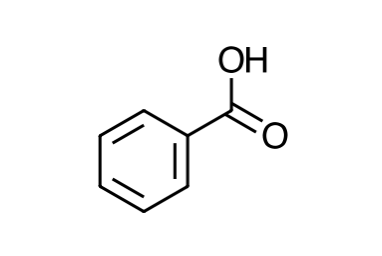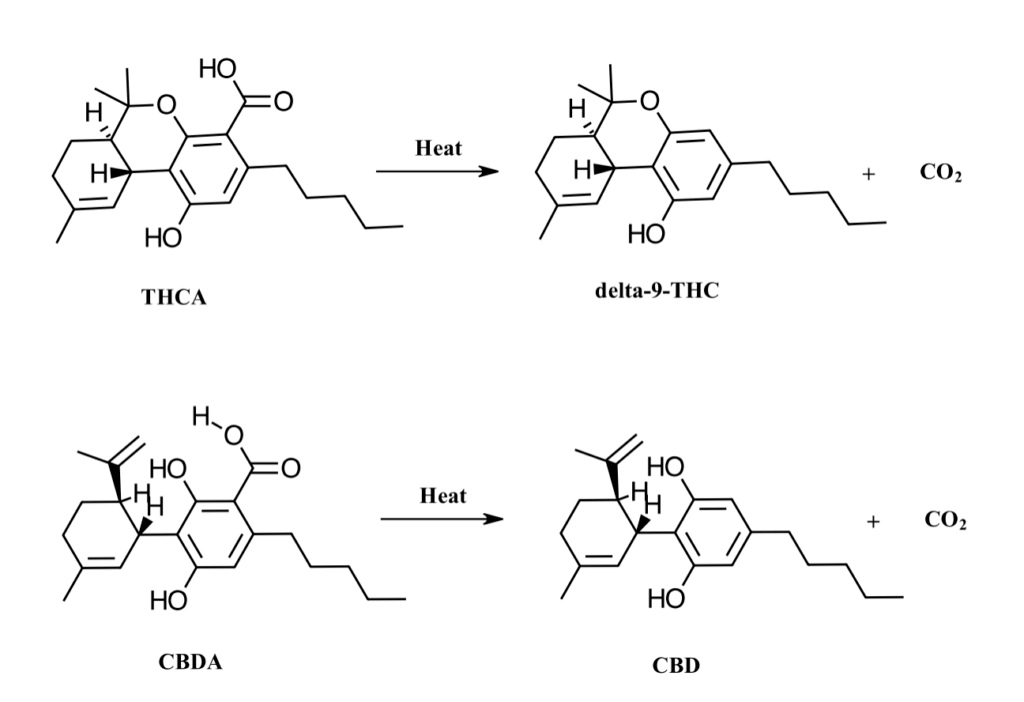One hears and reads about decarboxylation all the time in the cannabis industry. How many of you knows what it is? How it’s done? Why? Well here we are doing a deep dive into the chemistry of decarboxylation.
A carboxyl group is a -COOH unit. The hydrogen (H) is acidic, and readily dissociates from the oxygen (O) it is attached to. So, all carboxyl groups are acids, which means they have a pH in water below 7. THCA and CBDA are both carboxylic acids. Carboxylic acids are ubiquitous in nature. The one you are most familiar with is vinegar, which is a water solution of acetic acid. Acetic acid is just about the simplest carboxylic acid, with a molecular formula of CH3COOH. Acids are generally sour to the taste, and add important flavor notes to foods. Some bigger acids, such as butyric acid, are well known for their foul smell (it smells like vomit, mainly because your stomach digests bigger acids into butyric acid, and other smelly acids).
Things get a bit more interesting when the carboxyl group is attached to a phenyl ring:

In this case, depending on the substitution on the phenyl ring, the carboxyl group can be unstable, leading to decomposition into the parent phenyl ring and carbon dioxide:

As an aside, notice the structure of CO2: It is a very symmetrical linear structure. This is what makes it such a potent greenhouse gas. It absorbs heat, and reflects it back to the earth.
Now THCA and CBDA both are phenyl carboxylic acids, and can decompose as above:

Notice the loss of CO2 from the phenyl rings.
THCA and CBDA decompose under first order kinetics, which means they decay with a half-life that is dependent on temperature. The half-life of these compounds at room temperature is on the order of a year. Heating shortens the half-life exponentially, so that at 60 oC, it is measured in days, and at 120 oC, in minutes.
That’s why we heat to decarb.
Finally, as to why decarb at all comes down to the blood brain barrier. The acids are too polar to pass through the barrier, so if you want to get into the brain, you need to decarb. THCA and CBDA will pass through the digestive track unchanged. The heat of smoking does the job when inhaling the substances.
So that’s decarboxylation in a nutshell.